
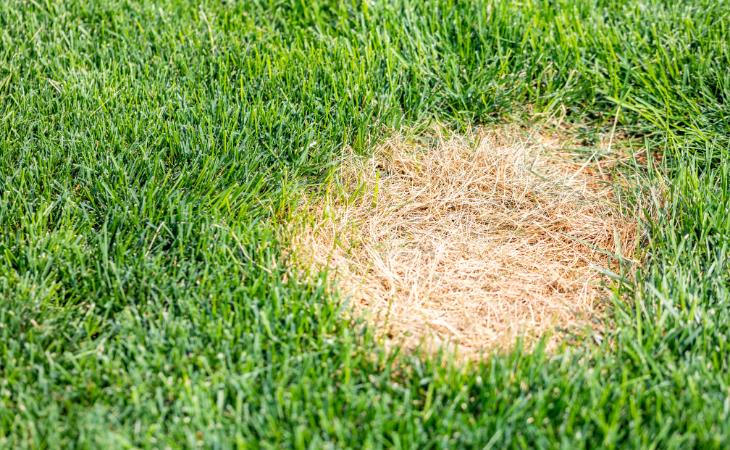
Brown spots in your lawn can happen for various reasons, including grubs munching on grass roots, fungus (such as Rhizoctonia) thriving in hot, humid late summers, thatch buildup between grass blades and roots, blunt mower blades injuring grass, over-fertilization, poor soil quality, or even dog urine. To identify the culprit, one must examine the spot's characteristics; for example, if it increases from a circular form over time, a fungal infection is likely.
The fix:
To fix the problem, use a grub eliminator, dethatch the afflicted area, keep your mower blades sharp, and follow fertilizer instructions properly. Then repair the damage by removing dead grass and spreading gypsum to prevent salt accumulation. Replant the area and cover the new seeds with fresh dirt.
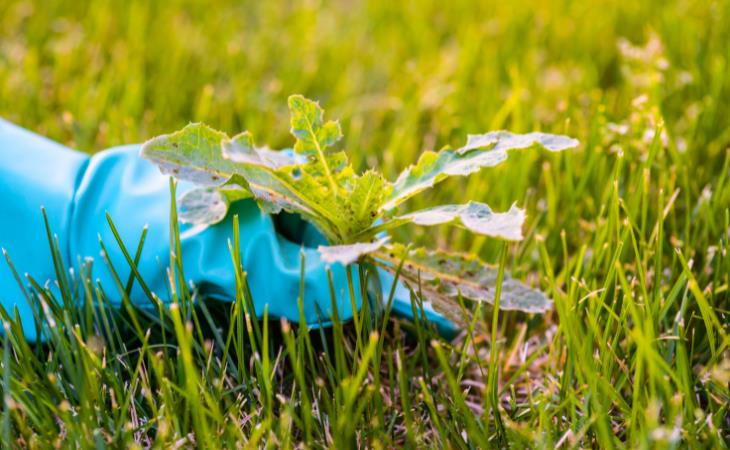
Weeds inevitably find a way to appear, no matter how hard you try to keep the lawn in order. The most common are dandelions, clover, and crabgrass, however, invasive species such as creeping Charlie and broadleaf plantains can soon take over. To keep them at bay without harming your grass, maintain its health with regular mowing, watering, and fertilizing routines.
The fix:
Weeds are easiest to pull when they are young and little. However, if they've taken root firmly with a lengthy tap, you may need to resort to digging, boiling, or other eco-friendly weed management tactics, such as pesticides.
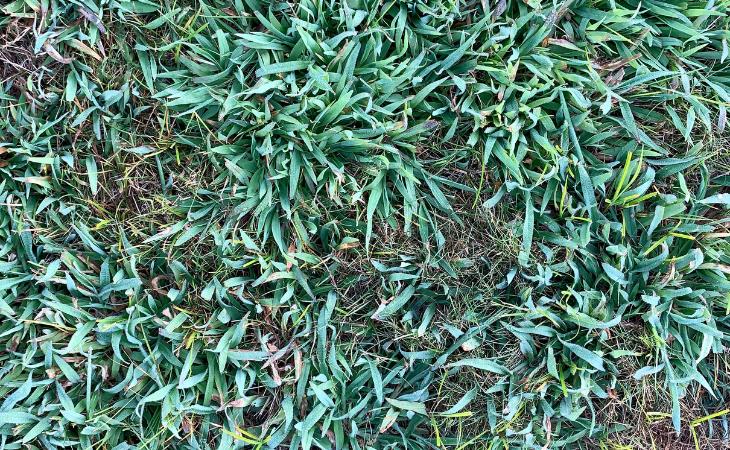
Thriving in lawns lacking adequate mowing and fertilization, crabgrass is an aggressive annual grass. Its rapid growth and adaptability make it a formidable foe, particularly in clay soil and compacted lawns. To effectively manage this weed, apply control measures at the right time. While some homeowners opt for pre-emergent herbicides in late spring or summer, this method often proves futile.
The fix:
Corn gluten meal is recommended to get rid of crabgrass without using pesticides. For best effects, use it in early spring. However, consultation with your local experts is necessary to determine the best application timing. The effective window is only 10 days long, therefore, timing is key. Including organic mulch in your plan can help by preventing sunlight from reaching the weed seeds.
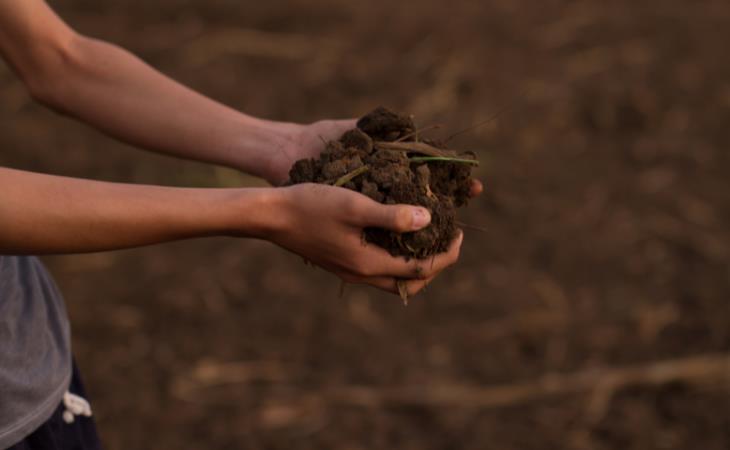
Compacted soil is a serious issue for lawns. Regardless of how well you prepare your grass, the soil beneath it will eventually harden. Increased foot traffic accelerates soil compaction, reducing the available open area necessary for air and water retention to just 10%. As a result, essential nutrients and oxygen fail to reach the roots, leaving them severely stressed. As the grass deteriorates, it becomes more susceptible to weed infestation.
The fix:
Lawn aeration is the most effective way to combat soil compaction. Professionals use piston-driven aerators with vertically moving tines to ensure full treatment. Following aeration, overseeding is essential to correct any barren or lackluster spots in the yard, promoting lush growth. Furthermore, including organic elements like compost or peat moss in the soil has substantial benefits. As soil organisms break down these compounds, natural soil aeration improves. Also, managing and redirecting foot activity away from the grass promotes its health and vibrancy.
Related: This Ultimate Lawn Guide Says Everything You Need to Mow
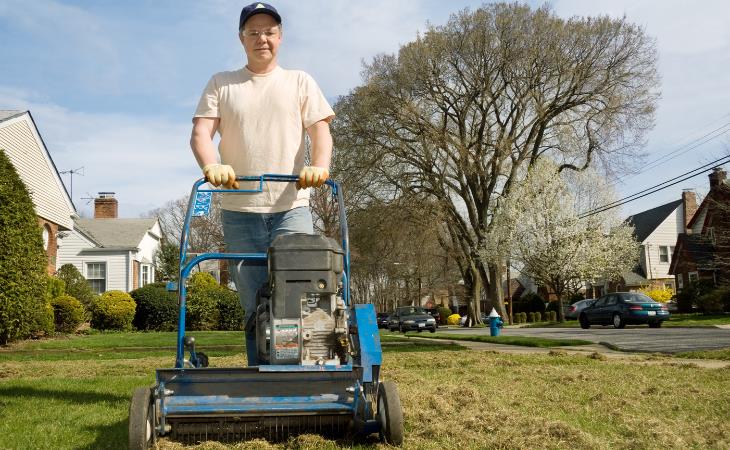
Thatch is a brownish covering formed by the buildup of grass and decomposing organic debris, which chokes the grass roots. Ironically, it is more common in beautifully maintained lawns than in those that are left ignored. Chemical usage can worsen the problem by hindering the natural degradation process.
The fix:
Using a power rake for dethatching might do substantial damage. As a result, lawn aeration may be a better option for lawns with thick thatch layers. Aeration is useful in reducing thatch exceeding 3/4 of an inch in thickness. To reduce thatch formation, aerate the lawn once a year and adjust the amount of water and fertilizer used.
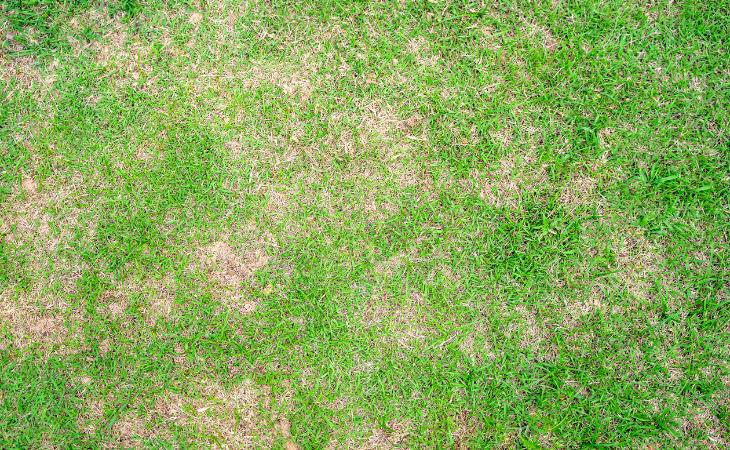
Residential lawns are prone to lawn rust, particularly during warm and humid weather. Symptoms include orange or yellowish-brown patches on the grass, which appear as if they are rust-colored. It usually happens because of low nitrogen levels or high wetness, and if left untreated, it can cause significant harm since it weakens the grass over time.
The fix:
Applying a nitrogen-fortified fertilizer to your lawn will protect it against rust while also improving its general health and resilience. In cases of severe infestation, using specific fungicides designed to fight lawn rust is the most effective way to eliminate the problem and restore the lawn's health.

Cat and dog urine contain high levels of nitrogen, which can damage your lawn and make it brown. These spots are particularly visible during periods of extreme heat and drought, increasing the stress on your lawn.
The fix:
As a first step, try to keep your pets away from that specific section of the yard. If you find your pet urinating on the plants, you may reduce the damage by properly watering the area. Alternatively, consider digging the damaged area (together with a few inches of surrounding grass), gently tilling the soil, adding a layer of loose topsoil (about.25 to.5 inches thick), reseeding, and giving ample watering. Also, consider using a starting fertilizer to promote new growth.
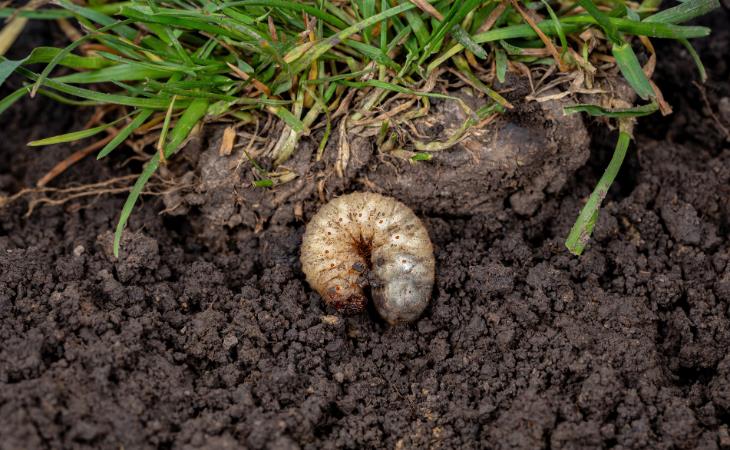
Curl grubs, which are the larvae of the African Black Beetle, are a common problem for lawns. They feed on the grass roots just below the surface, which causes the lawn to turn yellow and eventually brown as the grass dies. An obvious sign of curl grub infestation is when the lawn peels away easily, like a carpet. To confirm if there are curl grubs present in your lawn, put a moist towel on the grass overnight. Since they are attracted to moisture, the curl grubs will gather beneath the towel by the next morning.
The fix:
You don't always need pesticides or insecticides to manage grubs. Simply check the affected area: if you find fewer than 15 grubs per square foot after pulling up a piece of the brown patch, your lawn doesn't need treatment and will naturally rebound.
To effectively control grubs, consider using beneficial nematodes, which offer a safe biological solution. Mix Heterorhabditis nematodes with water and administer them to the soil in either fall or spring. After applying, allow a few days before reseeding or replanting to rejuvenate the affected areas. Do note that chemical insecticides containing imidacloprid are ineffective against mature grubs. If you choose chemical treatment, be sure to administer it when the grubs are still juvenile, which is usually between July and August.
Related: Now is the Time to Revive Your Patchy Lawn
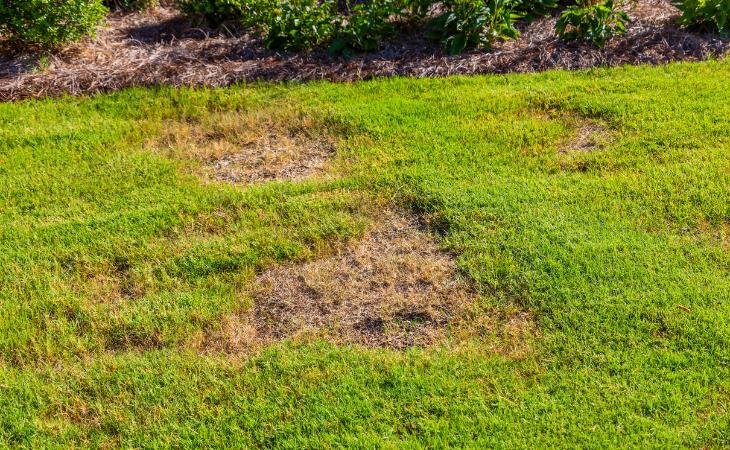
Similar to brown patches, bare spots in a lawn can result from various factors: frequent foot traffic, grub infestation, pet urine, soil deficiencies, fungal growth, hidden rocks, turf ailments, or spills of chemicals, fertilizers, or gasoline. Depending on the underlying issue, it might be necessary to irrigate the affected region before reseeding it.
The fix:
Scratch up the exposed soil, spread grass seed, and cover with fresh soil. There may be runner growth if you have Kentucky bluegrass or Bermuda grass surrounding the area.